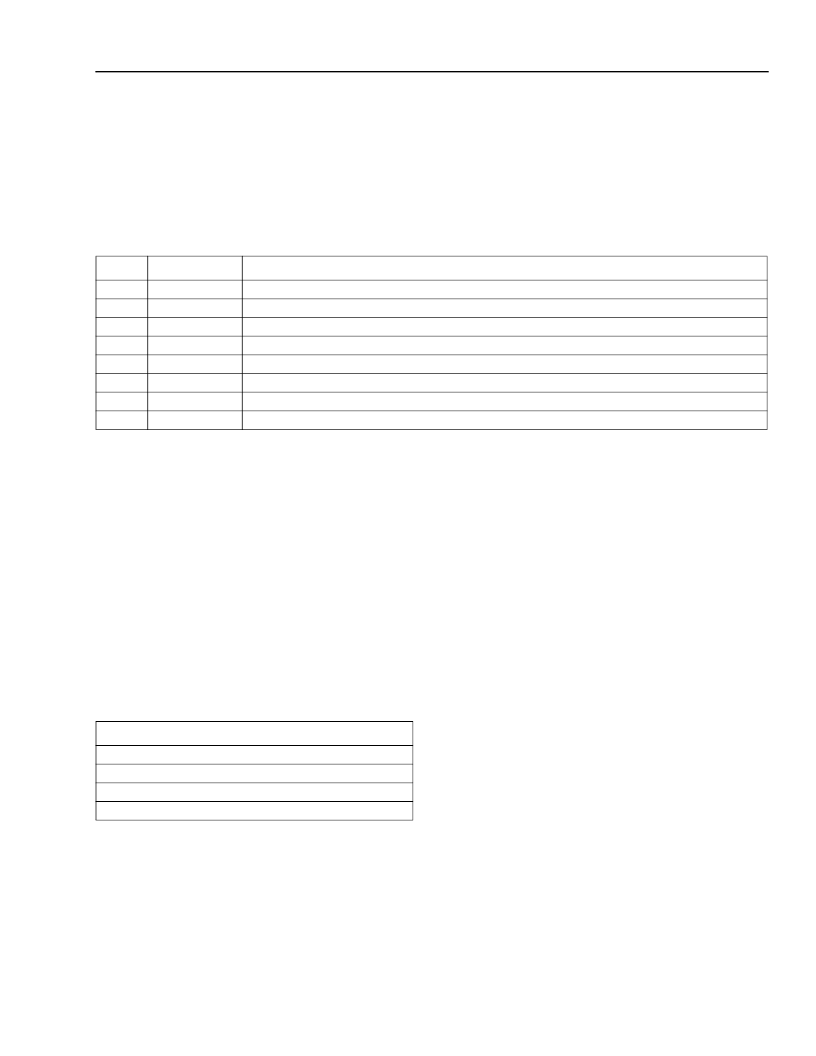- 您現(xiàn)在的位置:買賣IC網(wǎng) > PDF目錄373631 > TFRA08C13 Ultraframer DS3/E3/DS2/E2/DS1/E1/DS0 PDF資料下載
參數(shù)資料
| 型號(hào): | TFRA08C13 |
| 元件分類: | 通信及網(wǎng)絡(luò) |
| 英文描述: | Ultraframer DS3/E3/DS2/E2/DS1/E1/DS0 |
| 中文描述: | Ultraframer DS3/E3/DS2/E2/DS1/E1/DS0 |
| 文件頁(yè)數(shù): | 127/188頁(yè) |
| 文件大小: | 3047K |
| 代理商: | TFRA08C13 |
第1頁(yè)第2頁(yè)第3頁(yè)第4頁(yè)第5頁(yè)第6頁(yè)第7頁(yè)第8頁(yè)第9頁(yè)第10頁(yè)第11頁(yè)第12頁(yè)第13頁(yè)第14頁(yè)第15頁(yè)第16頁(yè)第17頁(yè)第18頁(yè)第19頁(yè)第20頁(yè)第21頁(yè)第22頁(yè)第23頁(yè)第24頁(yè)第25頁(yè)第26頁(yè)第27頁(yè)第28頁(yè)第29頁(yè)第30頁(yè)第31頁(yè)第32頁(yè)第33頁(yè)第34頁(yè)第35頁(yè)第36頁(yè)第37頁(yè)第38頁(yè)第39頁(yè)第40頁(yè)第41頁(yè)第42頁(yè)第43頁(yè)第44頁(yè)第45頁(yè)第46頁(yè)第47頁(yè)第48頁(yè)第49頁(yè)第50頁(yè)第51頁(yè)第52頁(yè)第53頁(yè)第54頁(yè)第55頁(yè)第56頁(yè)第57頁(yè)第58頁(yè)第59頁(yè)第60頁(yè)第61頁(yè)第62頁(yè)第63頁(yè)第64頁(yè)第65頁(yè)第66頁(yè)第67頁(yè)第68頁(yè)第69頁(yè)第70頁(yè)第71頁(yè)第72頁(yè)第73頁(yè)第74頁(yè)第75頁(yè)第76頁(yè)第77頁(yè)第78頁(yè)第79頁(yè)第80頁(yè)第81頁(yè)第82頁(yè)第83頁(yè)第84頁(yè)第85頁(yè)第86頁(yè)第87頁(yè)第88頁(yè)第89頁(yè)第90頁(yè)第91頁(yè)第92頁(yè)第93頁(yè)第94頁(yè)第95頁(yè)第96頁(yè)第97頁(yè)第98頁(yè)第99頁(yè)第100頁(yè)第101頁(yè)第102頁(yè)第103頁(yè)第104頁(yè)第105頁(yè)第106頁(yè)第107頁(yè)第108頁(yè)第109頁(yè)第110頁(yè)第111頁(yè)第112頁(yè)第113頁(yè)第114頁(yè)第115頁(yè)第116頁(yè)第117頁(yè)第118頁(yè)第119頁(yè)第120頁(yè)第121頁(yè)第122頁(yè)第123頁(yè)第124頁(yè)第125頁(yè)第126頁(yè)當(dāng)前第127頁(yè)第128頁(yè)第129頁(yè)第130頁(yè)第131頁(yè)第132頁(yè)第133頁(yè)第134頁(yè)第135頁(yè)第136頁(yè)第137頁(yè)第138頁(yè)第139頁(yè)第140頁(yè)第141頁(yè)第142頁(yè)第143頁(yè)第144頁(yè)第145頁(yè)第146頁(yè)第147頁(yè)第148頁(yè)第149頁(yè)第150頁(yè)第151頁(yè)第152頁(yè)第153頁(yè)第154頁(yè)第155頁(yè)第156頁(yè)第157頁(yè)第158頁(yè)第159頁(yè)第160頁(yè)第161頁(yè)第162頁(yè)第163頁(yè)第164頁(yè)第165頁(yè)第166頁(yè)第167頁(yè)第168頁(yè)第169頁(yè)第170頁(yè)第171頁(yè)第172頁(yè)第173頁(yè)第174頁(yè)第175頁(yè)第176頁(yè)第177頁(yè)第178頁(yè)第179頁(yè)第180頁(yè)第181頁(yè)第182頁(yè)第183頁(yè)第184頁(yè)第185頁(yè)第186頁(yè)第187頁(yè)第188頁(yè)

Lucent Technologies Inc.
127
Preliminary Data Sheet
October 2000
TFRA08C13 OCTAL T1/E1 Framer
Global Register Structure
(continued)
Global PLLCK Control Register (GREG9)
This register selectively enables/disables an individual transmit framer’s internal clock synthesizer. setting all bits to
0 (the default condition) disables all transmit framer clock synthesizers, and allows an external source of PLLCK to
drive the transmit framers.
Table 67. Global PLLCK Control Register (GREG9) (009)
Bit
0
1
2
3
4
5
6
7
Symbol
EIPLLCK1
EIPLLCK2
EIPLLCK3
EIPLLCK4
EIPLLCK5
EIPLLCK6
EIPLLCK7
EIPLLCK8
Description
Enable Transmit Framer 1’s Internal PLLCK Clock Synthesizer.
Enable Transmit Framer 2’s Internal PLLCK Clock Synthesizer.
Enable Transmit Framer 3’s Internal PLLCK Clock Synthesizer.
Enable Transmit Framer 4’s Internal PLLCK Clock Synthesizer.
Enable Transmit Framer 5’s Internal PLLCK Clock Synthesizer.
Enable Transmit Framer 6’s Internal PLLCK Clock Synthesizer.
Enable Transmit Framer 7’s Internal PLLCK Clock Synthesizer.
Enable Transmit Framer 8’s Internal PLLCK Clock Synthesizer.
Framer Register Architecture
REGBANK1—REGBANK8 contain the status and pro-
grammable control registers for the framer and system
CHI interface channels FRM1—FRM8. The base
address for REGBANK1—REGBANK8 is Y00 (hex),
where Y = 2—9 for FRM1—FRM8, respectively. Within
these register banks, the bit map is identical for
FRM1—FRM8.
The framer registers are structures as shown in Table
68. Default values are given in the individual register
definition tables.
Table 68. Framer Status and Control Blocks
Address Range (Hexadecimal)
* The most significant digit, designated by Y, is used to identify each
framer (for framer 1—framer 8, Y = 2—9, respectively).
The complete register map for the framer is given in
Table 182—Table 186. The address of the registers is
shown in the table title with the most significant digit,
designated by Y, used to identify each framer (for
framer 1—framer 8, Y = 2—9, respectively).
All status registers are clocked with the internal framer
receive line clock (RFRMCK).
Bits in status registers FRM_SR1 and FRM_SR7 are
set at the onset of the condition and are cleared on
read when the given condition is no longer present.
These registers can generate interrupts if the corre-
sponding register bits are enabled in interrupt enable
registers FRM_PR0—FRM_PR7.
On all 16-bit counter registers (FRM_SR8—
FRM_SR51), both bytes are cleared only after reading
both bytes. These status registers are two byte register
pairs. These register pairs must be read in succession,
with the lower byte read first followed by a read of
higher byte. Once a read is initiated on one of the
bytes, the updating of that counter is disabled and
remains disabled until both bytes are read. All events
during this interval are lost. Updating of the counter
registers is stopped when all of the bits are set to 1.
Updating resumes after the registers are cleared on
read. These register pairs may be read in any order,
but they must be read in pairs, i.e., a read of 1 byte
must be followed immediately by a read of the remain-
ing byte of the pair.
Status registers FRM_SR0—FRM_SR63 are clear-on-
read (COR) registers. These registers are cleared by
the framer internal received line clock (RFRMCK). At
least two RFRMCK cycles (1.3 μs for DS1 and 1.0 μs
for CEPT) must be allowed between successive reads
of the same COR register to allow it to properly clear.
Framer Register Block
Status Registers (COR) (Y00—Y3F)*
Receive Signaling Registers (Y40—Y5F)*
Parameter (Configuration) Registers (Y60—YA6)*
Transmit Signaling Registers (YE0—YFF)*
相關(guān)PDF資料 |
PDF描述 |
|---|---|
| TFRA08C13 | Ultraframer DS3/E3/DS2/E2/DS1/E1/DS0 |
| TFS380C | VI TELEFILTER Filter specification |
| TFT0675F | Anti-Aliasing and Reconstruction TFT range |
| TFT0675S | Anti-Aliasing and Reconstruction TFT range |
| TFT1350F | Anti-Aliasing and Reconstruction TFT range |
相關(guān)代理商/技術(shù)參數(shù) |
參數(shù)描述 |
|---|---|
| TFRA08C13-DB | 制造商:AGERE 制造商全稱:AGERE 功能描述:TFRA08C13 OCTAL T1/E1 Framer |
| TFRA28J133BAL-1 | 制造商:未知廠家 制造商全稱:未知廠家 功能描述:Telecomm/Datacomm |
| TFRA84J13 | 制造商:AGERE 制造商全稱:AGERE 功能描述:Ultraframer DS3/E3/DS2/E2/DS1/E1/DS0 |
| TFRA84J131BL-3-DB | 制造商:LSI Corporation 功能描述:Framer DS0/DS1/DS2/DS3/E1/E2/E3 1.5V/3.3V 909-Pin BGA |
| TFRA84J13DS0 | 制造商:AGERE 制造商全稱:AGERE 功能描述:Ultraframer DS3/E3/DS2/E2/DS1/E1/DS0 |
發(fā)布緊急采購(gòu),3分鐘左右您將得到回復(fù)。